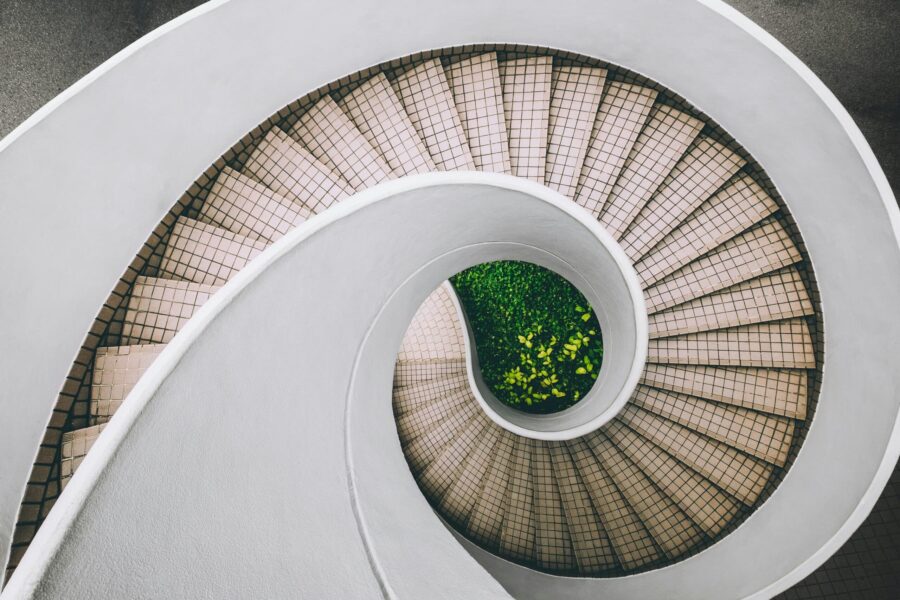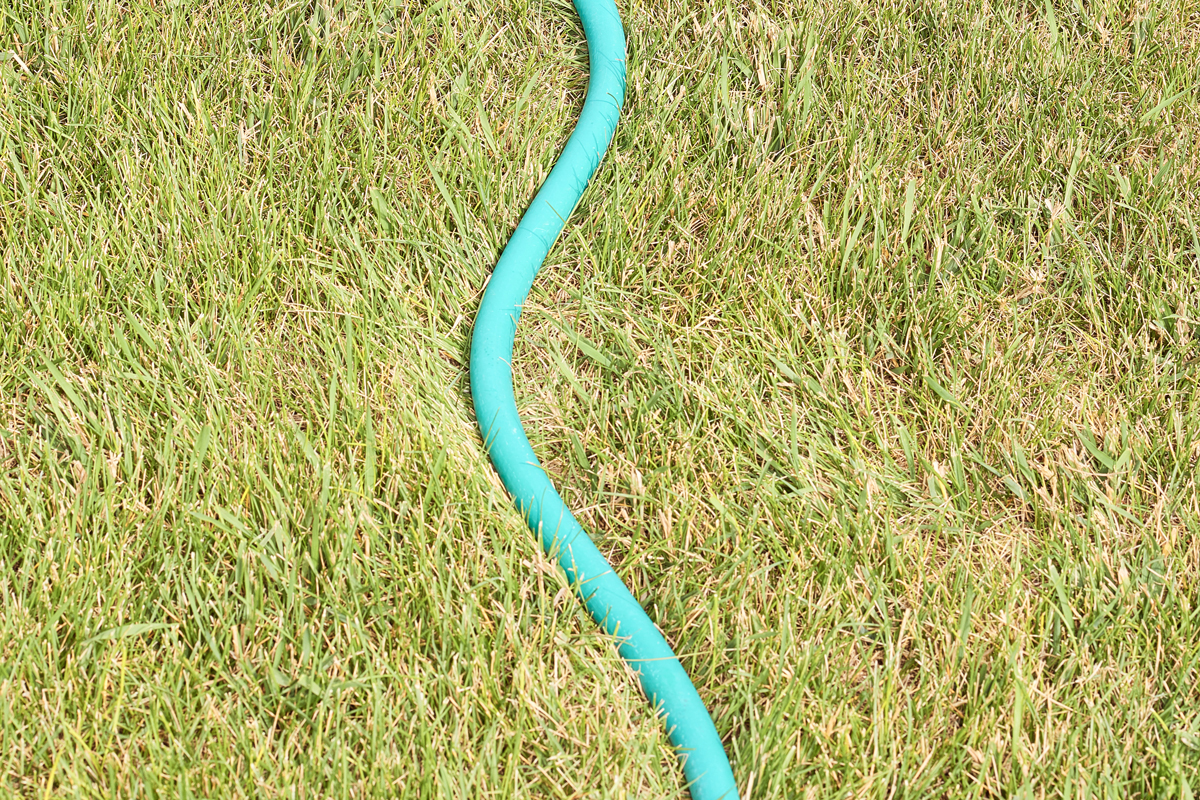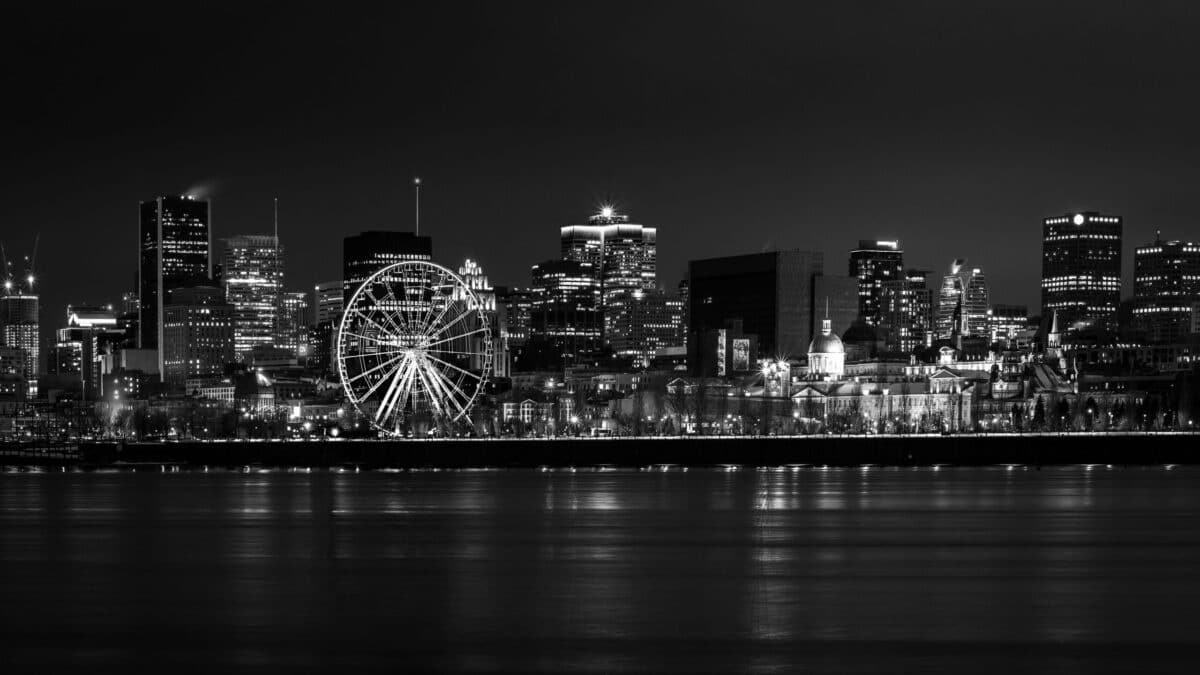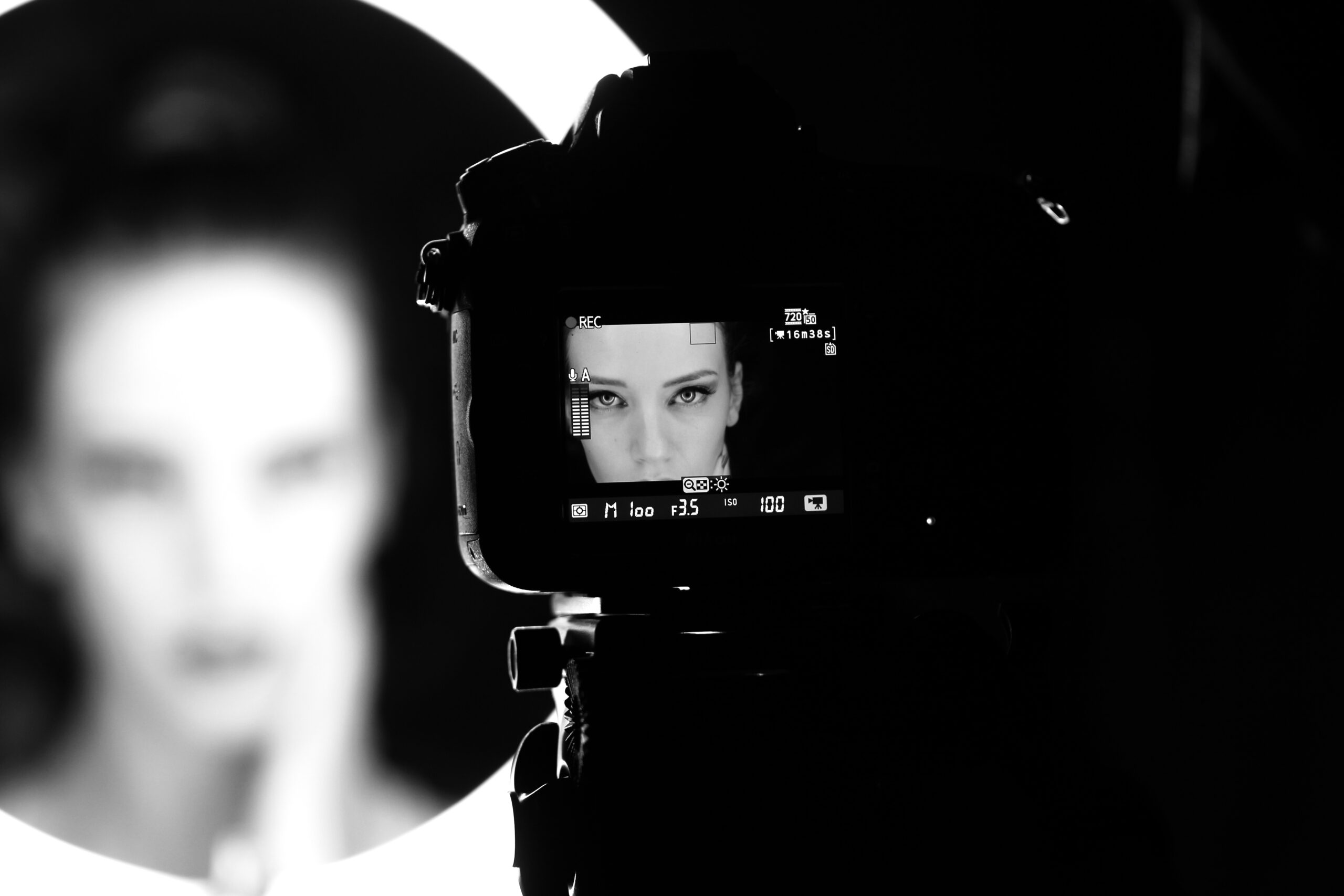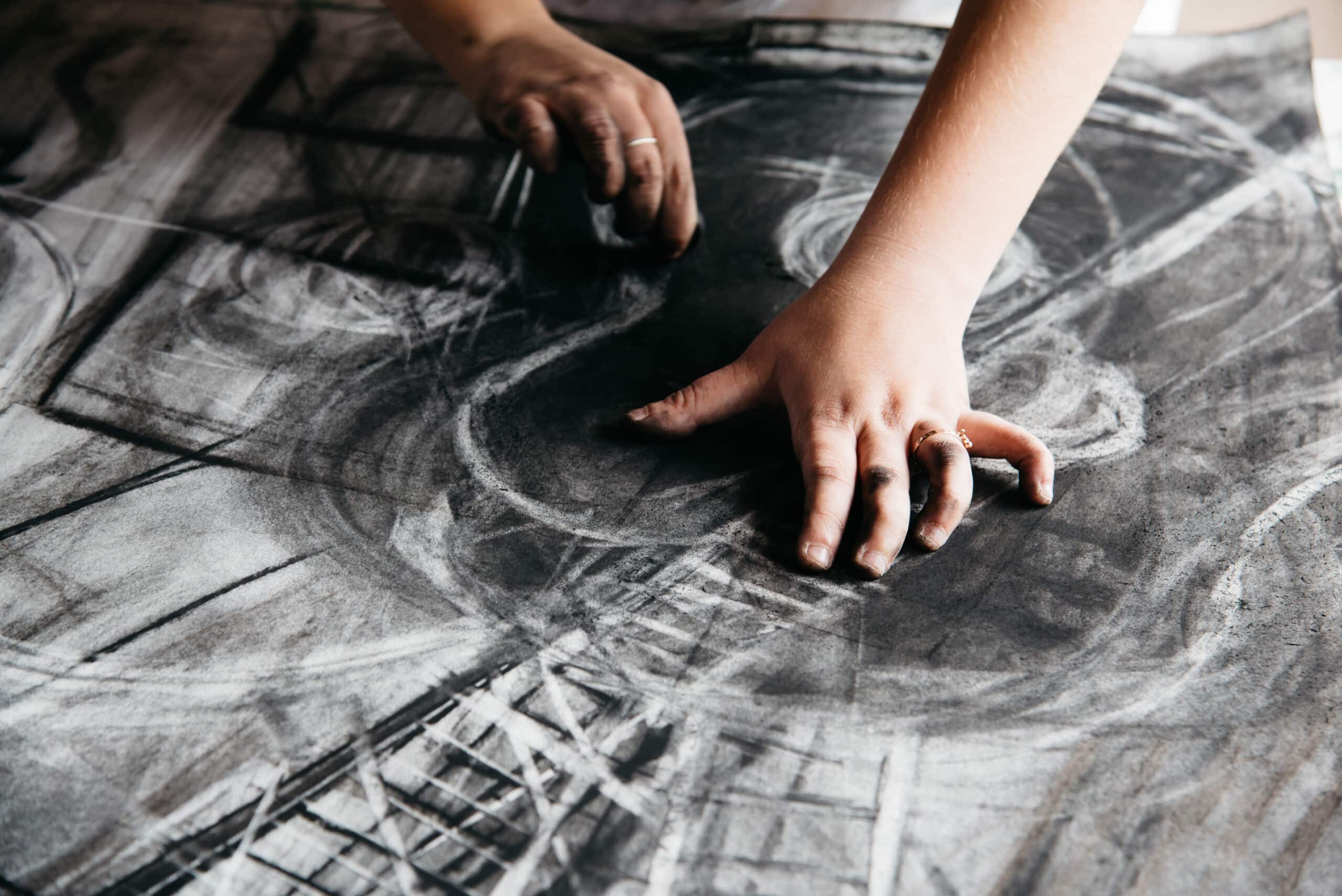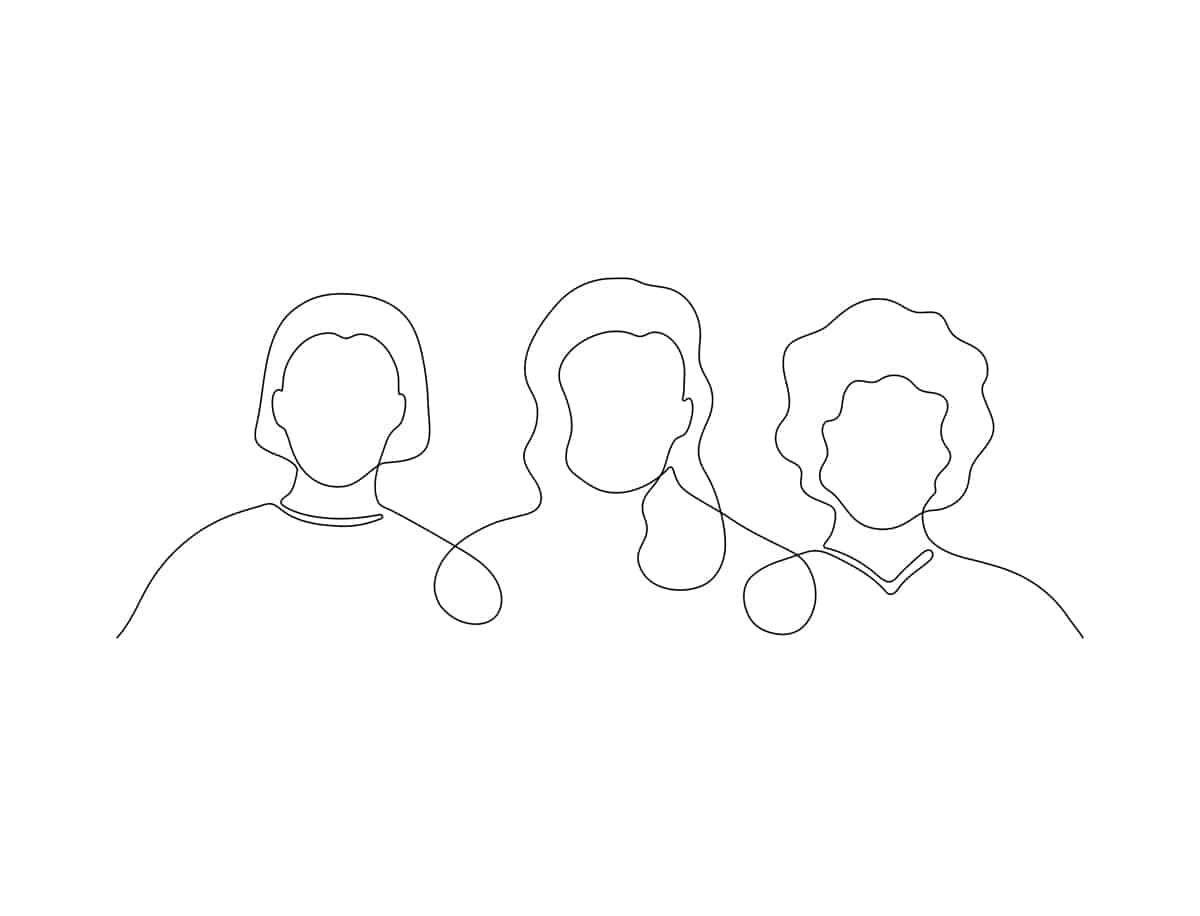Die Bildkomposition ist die bewusste Entscheidung eines Fotografen, wie er die visuellen Elemente in seinem Bild anordnet. Das mag einfach klingen, aber die Komposition eines Bildes kann sich auf Dinge wie Ton und Stimmung auswirken, zur Erzählung einer Geschichte beitragen und letztlich dazu beitragen, dass ein Betrachter entscheidet, ob er sich von einem Bild angesprochen fühlt oder nicht. Es kann das sein, was ein Fotograf von gut bis großartig.
Du kannst eine wunderschöne Szene vor dir haben oder ein umwerfendes Modell für ein Porträt, aber wenn du dein Bild nicht sinnvoll komponierst, wirst du deiner Szene nicht gerecht und dein Betrachter - ob bewusst oder unbewusst - wird von deinem Foto nicht so angetan sein. Egal, auf welches Genre du dich spezialisierst, ob Landschafts-, Straßen- oder Porträtfotografie, die Komposition spielt immer eine Rolle, wenn du ein großartiges Foto machen willst.
In diesem Artikel werden wir einige Ideen zur Komposition vorstellen. Führungslinien, Symmetrie und Muster, Tiefe und Perspektive, Kontrast und Farbe, sogar unkonventionelle Techniken - es gibt so viele Möglichkeiten, die Komposition über eine der bewährtesten Kompositionsregeln - die Drittel-Regel - hinaus zu gestalten. Und hey, warum definieren wir nicht gleich, was das ist?
Die Drittel-Regel ist ein Klassiker (wenn auch nicht Die klassische) Kompositionsregel in der Fotografie. Diese Regel unterteilt den Bildausschnitt in 9 Segmente, die durch ein 3×3-Raster gebildet werden. Normalerweise platziert der Fotograf das Motiv oder das Schlüsselelement auf einem Schnittpunkt des Rasters und lässt den Rest der Aufnahme (die restlichen zwei Drittel) offen. Das schafft visuelles Interesse und eine Art von Gleichgewicht im Bild. Wir wollen damit nicht sagen, dass du die Drittelregel nicht anwenden sollst, denn sie ist immer noch eine wichtige Technik für die Bildgestaltung! Wir sagen nur, dass es noch viele weitere Möglichkeiten gibt, um eine überzeugende Komposition in deiner Fotografie zu schaffen.
Also lies weiter und mach dir Notizen!
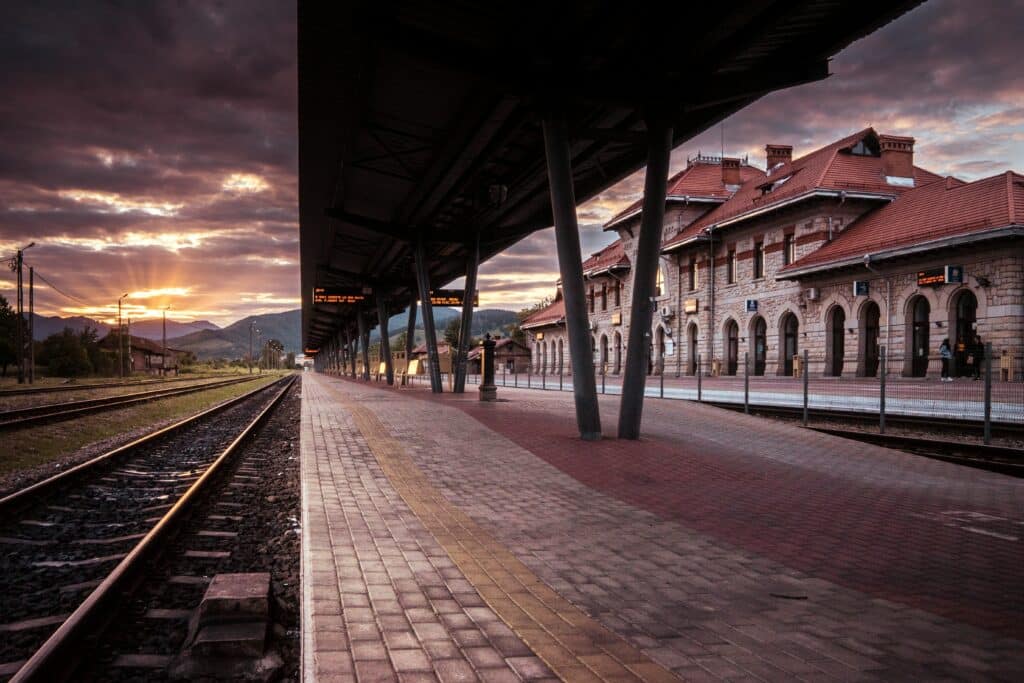
Führende Linien
Führungslinien sind eine Kompositionstechnik, bei der du Linien in deinen Rahmen einbaust, um den Betrachter auf etwas hinzuweisen. Das können Elemente wie Straßen und Straßenmarkierungen, Flüsse, sogar Türöffnungen und Schatten sein - alles, was den Betrachter auf etwas im Bildrahmen lenkt. Führende Linien beginnen und gehen irgendwo hin und können ein Gefühl von Bewegung vermitteln und sogar die Entfernung verlängern oder verkürzen.
Diagonale Linien
Diagonale Linien sind eine Art von Führungslinie, die ein Gefühl von Bewegung erzeugen kann. Als kompositorisches Element sind diagonale Linien besonders nützlich, wenn es um eine große Schärfentiefe geht, da sie die Entfernung betonen und den Blick des Betrachters vom Vorder- zum Hintergrund hin und her lenken können.
Horizontale Linien
Horizontale Linien sind Führungslinien, die man oft in der Landschafts- oder Naturfotografie findet. Da sich die Linie über das Bild erstreckt, sind sie besonders nützlich, wenn du mit einem Weitwinkelobjektiv fotografierst.
Vertikale Linien
Vertikale Linien sind eine Art von Führungslinie, die dramatisch und kraftvoll sein kann. Die Linie(n) zieht/ziehen den Betrachter im Bild nach oben oder unten und kann/können eine Hierarchie innerhalb deines Fotos vermitteln. Diese Kompositionstechnik ist in der Straßen- und Modefotografie sehr beliebt.
Gebogene Linien
Gekrümmte Linien in der Fotomontage lassen den Betrachter langsamer werden und suggerieren sogar, dass auf dem Foto die Zeit vergeht, weil der Betrachter länger braucht, um vom Anfang zum Ende der Linie zu gelangen.
S-förmige Linien
S-förmige Linien, auch "Schönheitslinie" genannt, sind geschwungene Linien in S-Form, die horizontal verlaufen. Diese Linien werden häufig in der Landschaftsfotografie verwendet, egal ob es sich um ein Gewässer oder eine kurvenreiche Straße handelt. Sie verleihen der Szene Tiefe und Dimension und können, ähnlich wie geschwungene Linien, das Bild auch verlangsamen.
Zickzack-Linien
Jenseits der traditionellen horizontalen und vertikalen Linien können Zickzacklinien in der Fotografie ein dynamischeres Gefühl von Bewegung und sogar Spannung erzeugen. Ob du es glaubst oder nicht, das Dreieck oder die Z-Form ist auch ein natürlicher Fluss für das menschliche Auge, denn dein Betrachter liest wahrscheinlich von links nach rechts, vorwärts und rückwärts und eine Seite hinunter.
Konvergierende Linien
Konvergierende Linien in deinem Fotorahmen bedeuten, dass die Linien so aussehen, als ob sie ineinander übergehen würden. Für diesen kompositorischen Trick platzierst du dein Motiv am besten in der Mitte dieser Linien. Konvergierende Linien lenken das Auge auf den Konvergenzpunkt.
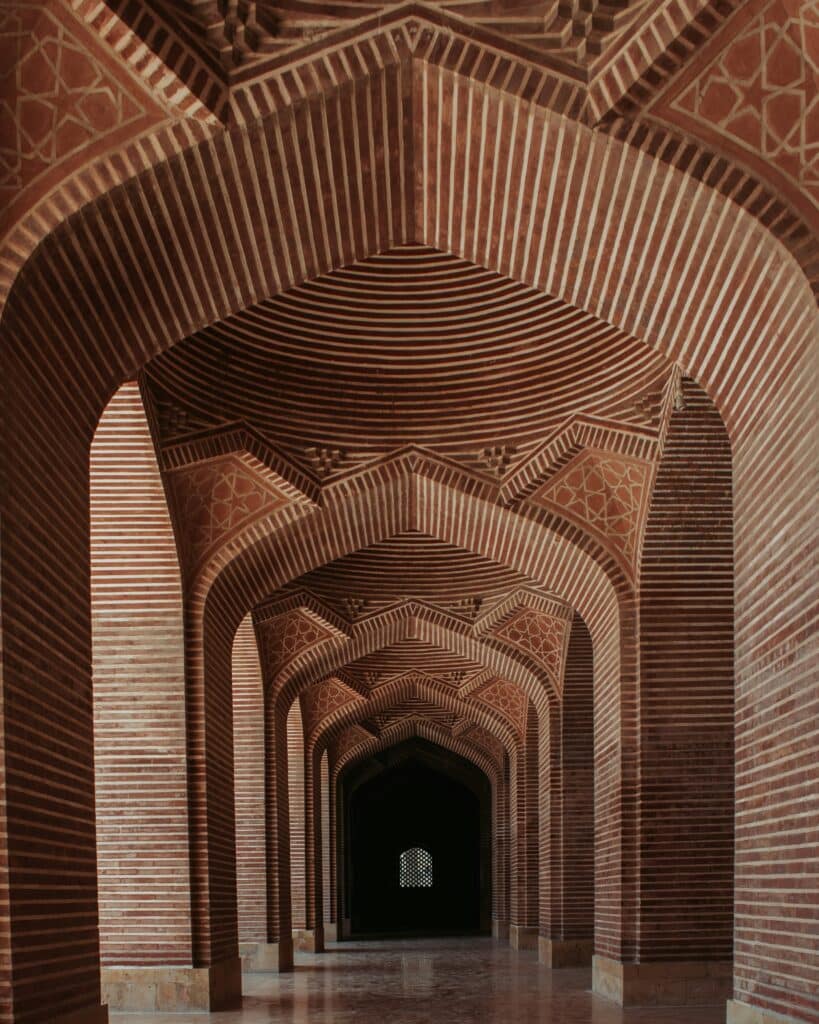
Symmetrie und Muster
Bilder, die das Auge erfreuen, sind ein guter Weg, um ein Foto zu komponieren. Das kann auf natürliche Weise geschehen, wenn du Muster oder Symmetrie in deinen Fotorahmen einbaust. Es gibt viele Möglichkeiten, dies zu tun, also lies weiter!
Symmetrisches Gleichgewicht
Bei einem symmetrisch komponierten Bild ist die eine Hälfte des Bildes identisch oder fast identisch mit der anderen und das Gewicht der visuellen Elemente ist auf beiden Seiten gleich verteilt. Zu deiner Information: Die Balance in einem Foto muss nicht immer symmetrisch sein. Asymmetrische Ausgewogenheit bedeutet, dass verschiedene visuelle Elemente mit ungleichem Gewicht, oft auf beiden Seiten des Bildes, ein Gefühl der Ausgewogenheit in einem Bild erzeugen.
Radialer Ausgleich
Die radiale Balance ist eine Art symmetrische Balance, die kreisförmig aussieht. Visuelle Elemente breiten sich von einem zentralen Punkt aus, ähnlich wie bei einem Kaleidoskop oder den Samen einer Pusteblume. Radial ausgewogene Designs sind oft kreisförmig, und es gibt viele Formen und Elemente, die in unserer Welt natürlich vorkommen, die als erste Inspiration dienen können, wie zum Beispiel das menschliche Auge.
Sich wiederholende Muster
Eine weitere Form der Symmetrie und des Musters sind sich wiederholende Muster, die als kompositorisches Element für dein Foto dienen können. Denke an eine gerade aufgenommene Treppe. Was macht dieses Element visuell interessanter? Wahrscheinlich die Wiederholung! Überlege dir andere sich wiederholende Muster, die du in deiner Umgebung finden oder selbst bauen könntest, um daraus ein Foto zu machen.
Formen verwenden
Es gibt vier Formen, die für die fotografische Gestaltung hilfreich sein können. Kreise (z. B. Tunnel) sind am häufigsten und vermitteln eine Art von Harmonie. Quadrate und Rechtecke (z. B. Türen) stehen für Ordnung. Dreiecke können ein Gefühl von Dramatik, Dynamik und Bewegung erzeugen. Dreiecke sind schwieriger zu finden, aber viele Fotografen suchen nach "angedeuteten Dreiecken", d.h. Diagonalen, die sich in einem zentralen Punkt treffen.
Texturen
Textur kann dein Foto optisch interessant machen. Manchmal scheint es, als gäbe es unendlich viele Möglichkeiten und Ideen für die Komposition. Mit dieser Kompositionsidee kannst du anfangen, über die Textur eines Elements nachzudenken und darüber, wie sie andere Elemente ergänzen oder nebeneinander stellen könnte.
Reflexionen
Wenn du Spiegelungen in dein Foto einbeziehst, bekommst du eine ganz andere Szene - die Spiegelung! Spiegelungen können eine großartige horizontale Symmetrie darstellen, aber mit den neuen Kompositionstricks, die du gelernt hast, kannst du auch andere Möglichkeiten finden, eine Spiegelung zu komponieren. Vielleicht gibt es interessante Wellen im Wasser, die du als Textur verwenden kannst. Du fotografierst ein Porträt? Denke darüber nach, einen Spiegel in deine Aufnahme einzubauen und überlege dir, wie du diesen neuen Bereich mit visuellen Informationen komponieren kannst.

Einrahmen und Zuschneiden
Der Rahmen und der Bildausschnitt können einen großen Einfluss auf deine Komposition haben. Wenn du dein Foto einrahmst, bevor du es aufnimmst, triffst du Entscheidungen über die Komposition innerhalb der Grenzen des Bildrahmens. Wenn du dein Foto nach der Aufnahme einrahmst, indem du es z. B. zuschneidest, passt du dein Foto an einen Bereich des Rahmens an, der z. B. stärkere kompositorische Elemente aufweist.
Versuche in erster Linie, dein Foto einzurahmen. Dann hast du zumindest beim Zuschneiden einen Plan B oder einen Fail Safe, um dein Bild nach der Aufnahme anzupassen, damit es kompositorisch ansprechender wird.
Architektonische Einrahmung
Architektur ist ein großartiges Mittel, um ein Foto einzurahmen. Designelemente wie Bögen, Fenster und Türen schaffen Öffnungen, die den Fokus deiner Komposition bilden und buchstäblich in deinen Rahmen eingefasst werden können. In der Kompositionsfotografie nennen wir das "einen Rahmen im Rahmen".
Platz Format
Ein quadratischer Rahmen kann bei der Bildkomposition von Vorteil sein, wenn du mit viel negativem Raum arbeitest, deine Aufnahme vereinfachen willst oder wenn du Elemente mit starken geometrischen Formen aufnimmst. Ein quadratischer Rahmen eignet sich auch gut für Schwarz-Weiß-Fotos und für Aufnahmen mit einer zentralen Komposition. Auch symmetrische Fotos oder solche mit reflektierenden Elementen eignen sich gut für ein quadratisches Format. Ein letzter Hinweis: Das menschliche Auge neigt dazu, sich in einem quadratischen Rahmen im Kreis zu bewegen (das hängt natürlich davon ab, wie du deine Aufnahme komponierst), also sei dir dessen bewusst.
Panorama Format
Wenn dein Motiv breiter ist als ein typisches Bild oder Seitenverhältnis, solltest du ein Panoramaformat in Betracht ziehen. Diese Art von Weitwinkelfoto hat eine Breite von 2:1 oder mehr (z. B. 4:1 oder 10:1). Eine weitläufige Natur- oder Stadtlandschaft ist ein gutes Beispiel dafür, dass ein Panoramabild die richtige Wahl sein kann. Es gibt so viele Möglichkeiten, Panoramafotos zu machen. Wenn du also neugierig geworden bist, fang an zu recherchieren und zu experimentieren!
Goldener Schnitt
Der Goldene Schnitt ist eine der wichtigsten Regeln für die Bildgestaltung in der Fotografie. Wir werden uns nicht mit seiner Geschichte und Mathematik befassen - für unsere Zwecke ist es wichtig zu verstehen, dass er ein Gleichgewicht in einem Bild schafft. Das Verhältnis kommt in unserer natürlichen Umgebung vor (z. B. bei Pflanzen, dem Nachthimmel, Wettermustern) und ist daher für unsere Wahrnehmung sehr ansprechend. Manche betrachten es als die natürliche Version der Drittel-Regel. Versuche, die Spirale (oder das Phi-Gitter oder die Fibonacci-Spirale in einigen Programmen und Apps) in deiner Nachbearbeitung zu verwenden. Experimentiere mit dem Ausschnitt deines Bildes, indem du den Brennpunkt in der Mitte der Spirale zentrierst.
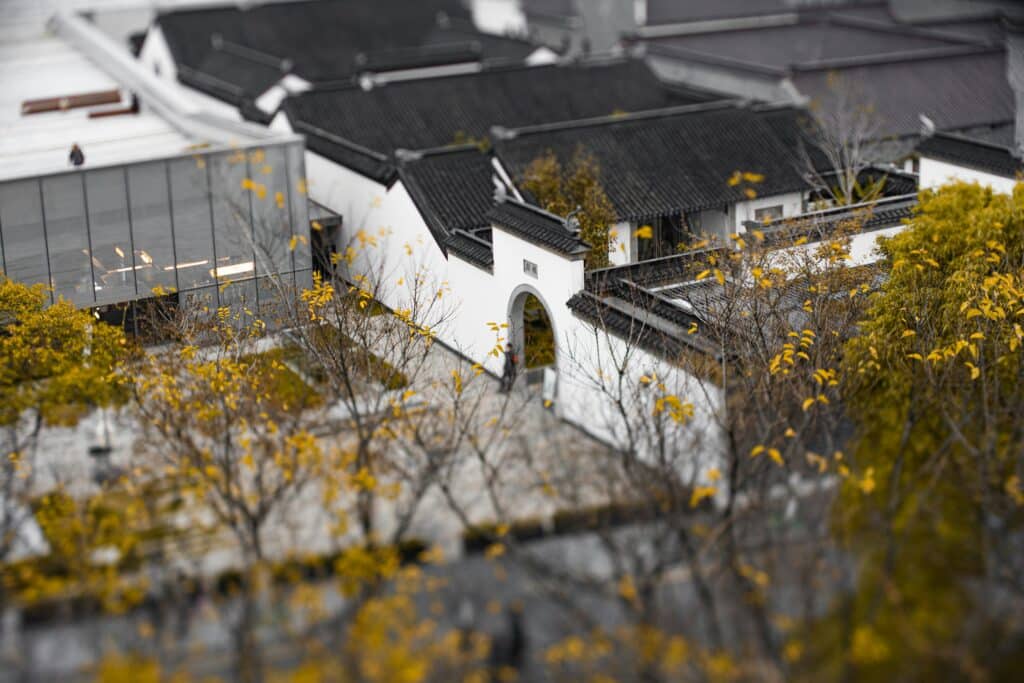
Tiefe und Perspektive
Tiefe und Perspektive können eine wirkungsvolle Kompositionstechnik in der Fotografie sein. Sie verleihen deinem zweidimensionalen Foto eine Dimension, indem sie ein Gefühl von Tiefe erzeugen oder die räumliche Beziehung zwischen Elementen besser definieren. Wenn du dir ihre Kräfte zunutze machst, kann dein Bild noch lebendiger wirken. Tiefe und Perspektive haben die Macht, den Maßstab von Objekten zu erfassen oder zu verzerren und bestimmte Elemente in den Fokus zu rücken. Es gibt viele Möglichkeiten, wie du Tiefe und Perspektive nutzen kannst, um eine überzeugende Aufnahme zu machen - lies weiter.
Interesse im Vordergrund
Indem du ein Element in der Nähe des Vordergrunds in dein Foto einfügst, kannst du deiner Aufnahme visuelles Interesse und einen anderen Sinn für Tiefe verleihen. Denke an die Elemente in deinem Fotorahmen. Wenn du herauszoomst, gibt es Elemente, die zu deiner Geschichte beitragen könnten? Ob scharf oder unscharf, Elemente im Vordergrund können deinem Foto etwas anderes verleihen.
Lineare Perspektive
Es gibt viele Überschneidungen zwischen der linearen Perspektive und den Führungslinien. Beides sind Beispiele dafür, wie wir das Auge in der Kompositionsfotografie lenken können. Die Linearperspektive hilft dabei, die Tiefe einer Szene in deinem Bild mit parallelen Linien und einem Fluchtpunkt darzustellen. Es gibt verschiedene Arten der linearen Perspektive - die Ein-, Zwei- und Drei-Punkt-Perspektive - also solltest du dich mit allen drei Arten beschäftigen und sie ausprobieren, wenn du kannst.
Erzwungene Perspektive
Die erzwungene Perspektive ist eine Kompositionstechnik, die optische Täuschungen nutzt, um Objekte oder Elemente in deinem Bild näher oder weiter weg, kleiner oder größer erscheinen zu lassen. Du hast vielleicht schon einmal gesehen, wie der Mond größer erscheint, wenn ein Objekt im Vordergrund auf der Horizontlinie steht, z. B. ein Gebäude, oder wie die Hand einer Person im Vordergrund ein extrem großes Objekt im Hintergrund zu greifen scheint. Dies ist ein Beispiel für eine erzwungene Perspektive. Sie kann die Art und Weise, wie die Betrachter/innen die Elemente in deiner Aufnahme wahrnehmen, stark verändern und viele verschiedene Möglichkeiten für die Bildkomposition eröffnen.
Tiefenschärfe
Die Schärfentiefe ist eine weitere Möglichkeit, einem Bild mehr Tiefe zu geben (du hast es erraten). Wenn du eine geringe Schärfentiefe wählst, verschwimmt dein Hintergrund (oder Vordergrund). Mit deiner Schärfentiefe entscheidest du, was du in einem Bild hervorheben möchtest. Eine geringe Schärfentiefe eignet sich zum Beispiel gut für eine Porträtaufnahme, die dein Motiv in den Fokus rückt und die Dimension zwischen deinem Motiv und dem Hintergrund hervorhebt.
Tilt-Shift Fotografie
Die Tilt-Shift-Fotografie wird häufig in der Architektur-, Landschafts-, Porträt-, Produkt- und sogar in der Miniaturfotografie eingesetzt, um kreative Tiefenschärfe-Effekte zu erzielen. Die Tilt-Shift-Perspektive ist eine weitere Kompositionstechnik, die du ausprobieren kannst, wenn dich das Spiel mit der Schärfentiefe interessiert oder wenn sich deine Aufnahme besonders gut dafür eignet.
Ansicht aus der Vogelperspektive
Die Vogelperspektive ist eine weitere kompositorische Wahl, die von der Umgebung und der Stimmung abhängt, die du mit deinem Foto vermitteln willst. Die Vogelperspektive, auch Luftaufnahme oder Überkopfaufnahme genannt, ist ein interessanter Blickwinkel, den du deinem Betrachter gibst und der in vielen Fällen ein Gefühl der Überwachung hervorruft.
Ansicht aus der Wurm-Perspektive
Die Froschperspektive, manchmal auch als Low Angle Photography bezeichnet, ist das Gegenteil der Vogelperspektive. Auf diese Weise fotografierst du die Welt von unten nach oben, wodurch der Betrachter eine andere Sichtweise auf die Szene erhält. Dieser Blick kann ein kindliches Gefühl der Verwunderung oder sogar ein Gefühl der Unterlegenheit vermitteln - es kommt ganz darauf an, wie und was du fotografierst.
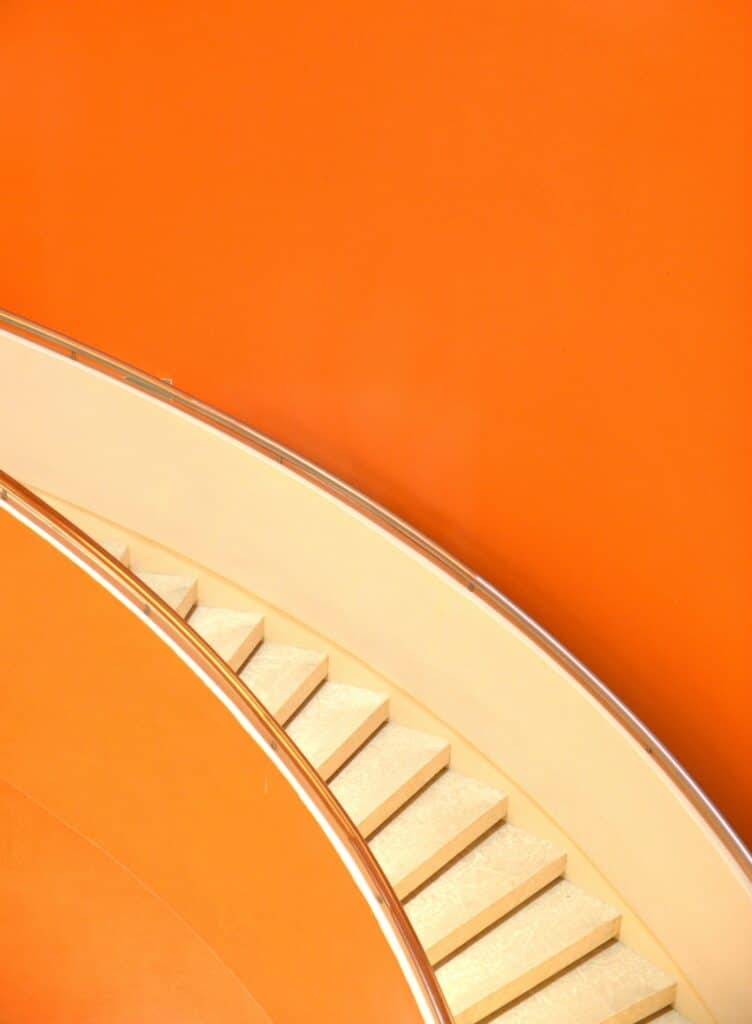
Kontrast und Farbe
Du fragst dich vielleicht, was Kontrast und Farbe mit der Bildkomposition zu tun haben, aber die Farbtheorie kann wirklich einen großen Einfluss auf den Erfolg deiner Komposition haben. Farben und Töne haben unterschiedliche visuelle Werte und Gewichtungen, können verwendet werden, um bestimmte Elemente in deinem Foto hervorzuheben oder zu betonen, und sogar die Stimmung eines Bildes verändern. Sieh dir also an, wie du Farben und Kontraste zu deinem Vorteil in deine Kompositionen einbauen kannst.
Farbkontrast
Wahrscheinlich siehst du Farben bereits so scharfsinnig wie viele andere Künstler/innen und Designer/innen - durch deine eigenen natürlichen Fähigkeiten. Wenn du das Farbrad kennenlernst und weißt, wie verschiedene Farben und Töne miteinander interagieren, kannst du deine künstlerischen Fähigkeiten verbessern. Ob es um Farben geht, die mit neutralen Hintergründen kontrastieren, oder um die Verwendung von Komplementärfarben, um Kontraste zu erzeugen - die Erweiterung deines Farbwissens wird deine Kompositionsfähigkeiten nur verbessern.
High-Key-Beleuchtung
In der Nachbearbeitung kannst du mit High-Key-Beleuchtung die Stärke deiner Komposition unterstreichen. Indem du deine Tonwerte verfeinerst und Helligkeit und Belichtung anpasst, kannst du die Balance deines Fotos verbessern. Es kann auch dazu beitragen, dein Foto zu vereinfachen und die visuelle Unordnung zu übertönen, damit sich dein Betrachter auf das Wesentliche konzentrieren kann.
Low-Key-Beleuchtung
Indem du das Licht in Low-Key-Fotos reduzierst, können die Elemente auf deinen Fotos in einem auffälligen Kontrast zueinander stehen: ein beleuchtetes Motiv gepaart mit dunklen Tönen und Schatten. Denk aber daran, dass du immer noch genug Kontrast brauchst, um die Komposition zu erkennen (je nach Absicht). Überlege dir auch andere Kompositionsideen, die du mit Fotos mit wenig Kontrast kombinieren kannst. Willst du ein Porträt mit mehr Dramatik? Vielleicht passt ein quadratisches, zentriertes Porträt gut zu Low-Key.
Schwarz-Weiß-Fotografie
Bei der Schwarz-Weiß-Fotografie wird ein Großteil der visuellen Informationen auf einem Foto entfernt, nämlich die Farbe. Auf diese Weise bist du besonders auf die Komposition angewiesen, damit dein Foto gut wird. Weiß, Schwarz und die Töne dazwischen haben alle eine andere visuelle Gewichtung. Wenn du also diese Kompositionstechnik ausprobierst, solltest du damit spielen, wie sich die Elemente in deinem Bild ausbalancieren - es wird ganz anders aussehen, als wenn es in Farbe ist!
Selektive Farbe
Selektive Farbe ist eine Entscheidung, die ein Fotograf in der Nachbearbeitung trifft, bei der eine oder zwei ausgewählte Farben in ein Schwarz-Weiß-Foto eingefügt werden. Dies verleiht einem Schwarz-Weiß-Foto eine neue Dimension. Die Wahl der Farbe, des Elements und der Platzierung im Rahmen beeinflussen das Foto. Diese Kompositionstechnik kann leicht ins Klischeehafte abgleiten, deshalb solltest du vorsichtig sein, wie du das machst, und es wirklich absichtlich tun.
Farbblockierung
Color Blocking ist genau das: das Zusammenstellen von Farben, egal ob im Studio oder bei der Auswahl der Motive, die du in einer künstlichen oder natürlichen Umgebung fotografieren möchtest. Bist du im Studio und musst dich entscheiden, welche Farben du verwenden willst, sei es für das Styling von Lebensmitteln, Produkten, Mode oder Porträts? Ziehe die Verwendung von Komplementärfarben oder die Drei-Farben-Regel in Betracht: Wähle eine Grundfarbe und zwei weitere Komplementärfarben für dein Motiv.
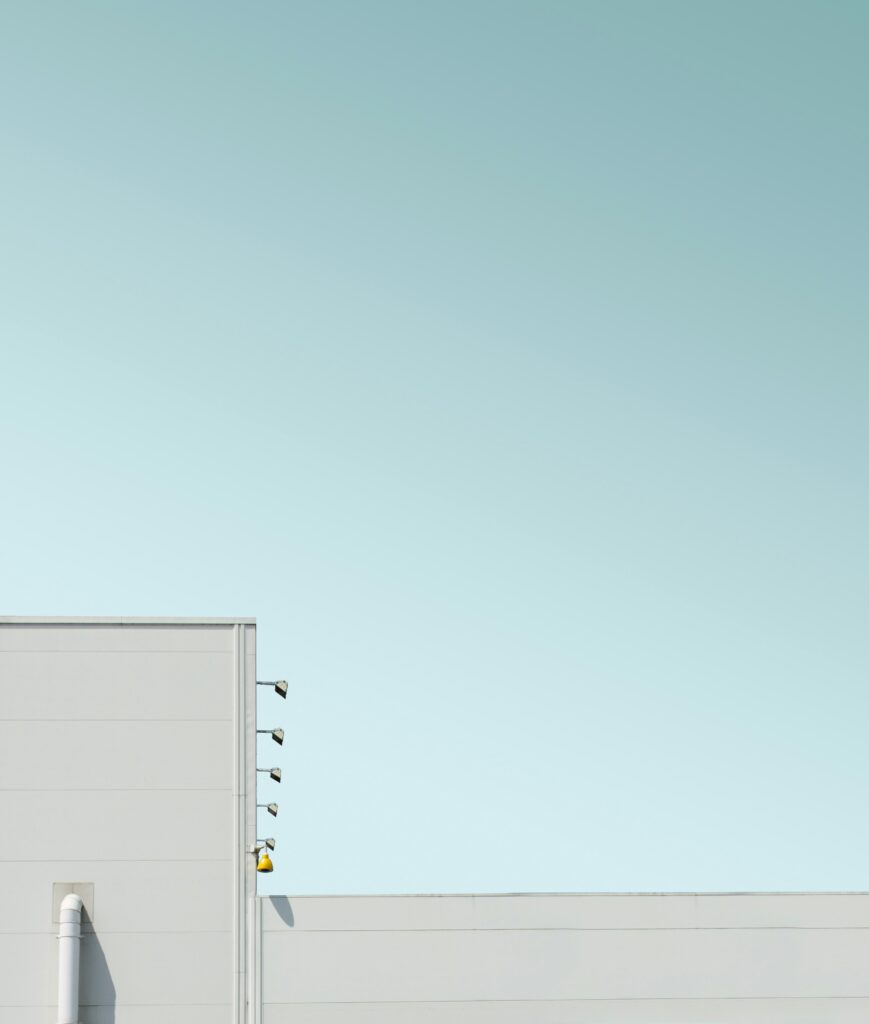
Unkonventionelle Techniken
Bist du noch auf der Suche nach weiteren Techniken für die Kompositionsfotografie? Lass uns in einige unkonventionelle Techniken eintauchen, die über die Drittel-Regel hinausgehen. Einige dieser Techniken werden vielleicht als "künstlerisch" angesehen oder werfen mehr Fragen als Antworten auf, aber denke darüber nach, deinen Horizont zu erweitern und etwas einzubauen, das dich ansprechen könnte.
Negativer Raum
Der Negativraum ist eine kompositorische Fototechnik, die Raum um dein Motiv oder Elemente in deinem Foto herum schafft. Das schafft Einfachheit und Raum zum Atmen für dein Motiv und den Betrachter. Wenn du den Negativraum verwendest, bietet es sich an, andere Kompositionsregeln wie die Drittel-Regel, die natürliche Balance usw. zu kombinieren, um das Element, auf das du dich konzentrierst, in den Bildrahmen einzurahmen.
Extreme Winkel
Extreme Blickwinkel sind alles, was von der Norm abweicht, wie wir Elemente oder Objekte normalerweise betrachten - sie sind Widersprüche in der Perspektive. Während man sie als Vogelperspektive und niedrigen Winkel bezeichnen könnte, ist eine Technik wie das Fischauge eher mit einem extremen Winkel verbunden. Recherchiere Aufnahmen aus den 90er Jahren und probiere es aus. Es macht besonders viel Spaß, mit dieser Technik menschliche Motive zu fotografieren.
Doppelbelichtung
Doppelbelichtung kann eine lustige und beeindruckende Technik sein. Aber es geht um mehr als nur die Fähigkeit, das Bild zu erstellen. Es geht darum, deine beiden Fotos so zu komponieren, dass sie sich absichtlich ergänzen oder einander gegenüberstehen. Es ist wichtig, dass du dies mit Bedacht tust, denn das neue Bild kann eine neue Bedeutung und Symbolik vermitteln, oder es kann überladen und verwirrend aussehen und die Absicht, die du verfolgst, verlieren.
Extrem zoomen und zuschneiden
Ein enger Ausschnitt (nach der Aufnahme) oder das Heranzoomen (während des Fotografierens) bestimmter Elemente deines Fotos sind weitere Möglichkeiten, eine unkonventionelle Komposition in deinen Bilderrahmen zu bringen. Indem du einen Bereich deines Fotos oder eine Szene näher heranzoomst, verstärkst du die Intimität zwischen deinem Motiv und dem Betrachter, was die Art und Weise, wie dein Foto gesehen wird, verändern kann.
Spielen mit Fokus
Wir verbringen so viel Zeit damit, unsere Fotos zu fokussieren. Wäre es da nicht befreiend, mit unscharfen Bildern zu spielen? Wenn du das für falsch hältst, denk mal kurz darüber nach - ein unscharfes Bild kann die Stimmung einer Aufnahme verändern, den Betrachter neugierig machen und ihn sogar dazu bringen, seine eigene Fantasie zu benutzen, um sich ein eigenes Bild von der Szene zu machen.
Da hast du es! Wir hoffen, dass unsere Reihe von Tipps und Ideen für die Komposition deiner Fotos jenseits der Drittel-Regel hilfreich war. Vergiss nicht, dass die Komposition deines Bildes einen großen Einfluss auf den Erfolg deines Fotos hat. Wenn du dein technisches Können und deine künstlerischen Fähigkeiten unter Beweis stellst und verstehst, wie die Komposition deine Betrachter/innen wirklich fesselt, wird deine Fotografie neue Höhen erreichen, wenn du eine Reihe kreativer Kompositionstechniken ausprobierst.
Wir haben uns verschiedene Möglichkeiten angesehen, wie man Führungslinien erstellt, wie Symmetrie und Muster die Komposition beeinflussen können und wie man mit Tiefe und Perspektive spielt. Wir haben uns auch angeschaut, wie Kontrast und Farbe deine Komposition beeinflussen können. Zum Schluss haben wir uns einige unkonventionelle Techniken angeschaut und ausprobiert.
Wir sind sicher, dass du auch deine eigenen hast, aber wir möchten dich ermutigen, diese neuen Ideen auszuprobieren! Vielleicht findest du sogar gute Kombinationen aus zwei oder mehr Techniken, die sich für bestimmte Aufnahmen eignen. Die Absicht in dein Bild bringen Fotografie Wir hoffen, dass du durch sorgfältige Komposition neue Inspirationen, erfolgreichere Shootings und Kunden sowie mehr Arbeit bekommst - der Himmel ist die Grenze.
